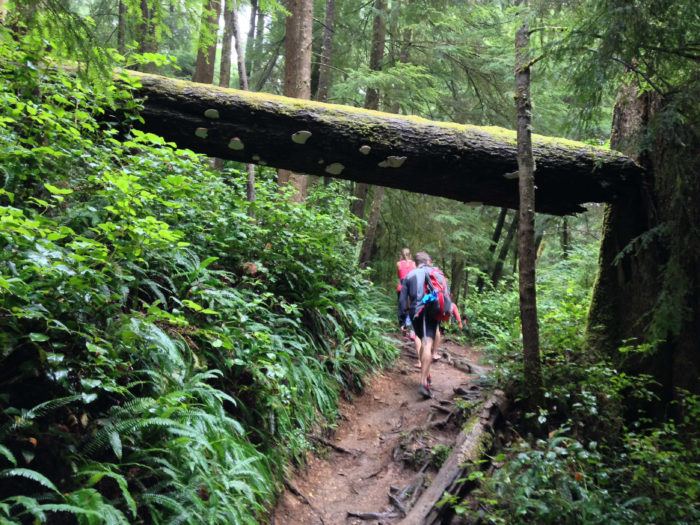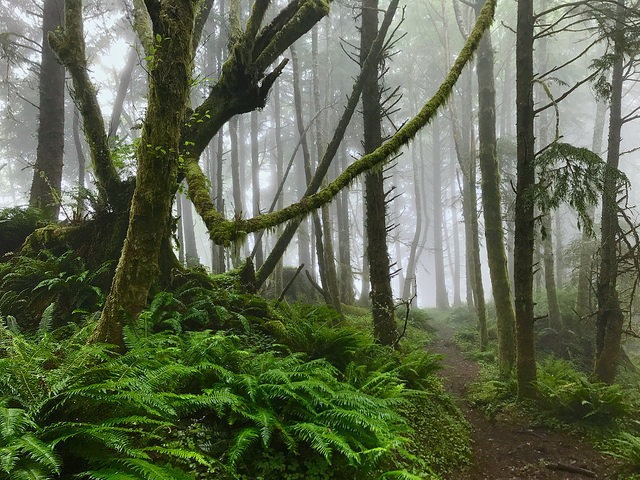Tillamook Head Trail

Just south of Seaside is the trailhead for the Tillamook Head. The climb ascends more than a thousand feet above sea level through an old-growth Sitka spruce/hemlock forest, with its highest point being close to Clark's Mountain's top, which is completely covered in trees. There are only sporadic ocean views, such as from a location close to Hikers Camp that offers a view of the Tillamook Rock Light. Additionally, a radar station from World War II had stood in this region. Indian Beach, where Captain Clark of the Lewis & Clark Expedition remarked that there had once been an Indian settlement, marks the route's end.
William Clark, who had just completed an extensive journey across the continent, ascended Tillamook Head in 1806 and "beheld the largest and most pleasant vista which my eyes ever scanned." Follow the footprints of Lewis and Clark from the hamlet of Seaside to Ecola State Park to discover what so mesmerized him. Through old-growth forest, the 6.3-mile trail ascends more than 1,000 feet, providing breathtaking views of mountain ranges protruding into the Pacific. In the winter and spring, keep an eye out for deer, eagles, and gray whales that are migrating. You will see Cannon Beach and its well-known basalt rock formations as the trail descends toward Indian Beach.
The farthest point the Lewis and Clark expedition traveled was 20 miles south at Tillamook Head, where they went hiking in quest of whale blubber, not at the mouth of the Columbia River. In Ecola State Park today, a portion of the Oregon Coast Trail follows the explorers' path to Tillamook Head, a stunning 1,000-foot bluff that provides views of rocky islands. The path passes a vista that even Captain Clark gasped at in awe.
Length: 6.3 miles
Elevation: 1350 feet
Level: Moderate











